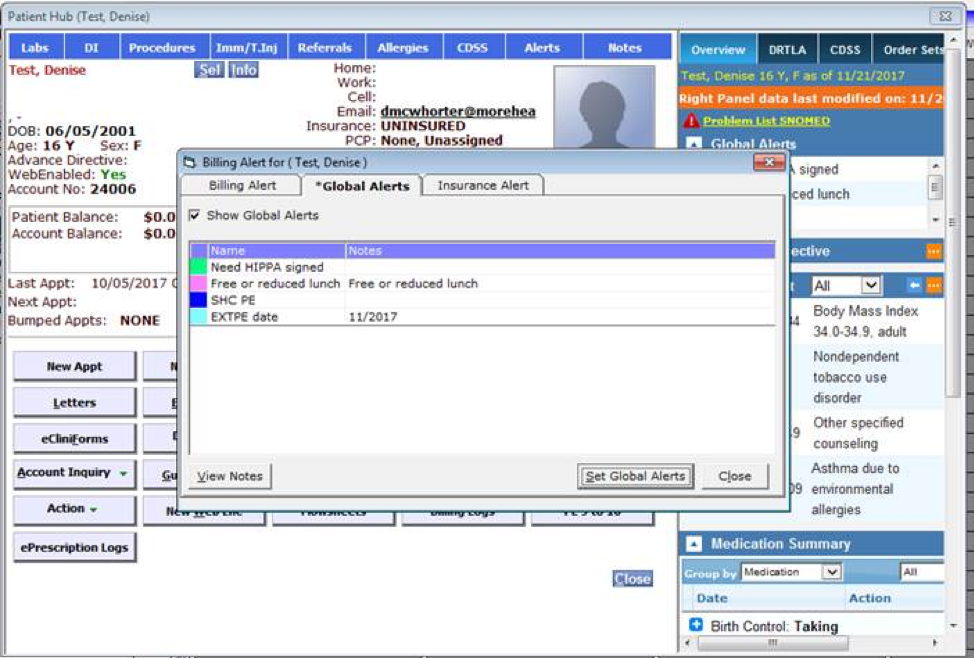Well Child Visit
The well-child/adolescent visit (WCV) is the cornerstone of pediatric care. SBHC providers should conduct these visits annually because they’re not only a chance to deliver comprehensive, evidence-based preventive care — they can also allow providers to identify health risks early and then intervene. A comprehensive WCV can improve performance in the four other national measures as well: annual risk assessment; body mass index measurement and nutrition and physical activity counseling; depression screen; and Chlamydia screen.
Well Child Visit Case Examples
Case Example 1: Converting Acute Care Visits to Comprehensive Well-Care Visits
A school-based health center in Colorado found that by converting acute care visits to comprehensive well-care visits, their providers gave more WCVs to patients, improved the relationships with those patients, and felt more satisfied in their work. The SBHC staff also witnessed an improvement in each of the other measures because the WCV was the point when risk assessments, BMI assessments, depression screens, and Chlamydia screens took place.
Case Example 2: Documenting Well-Child Visits in Electronic Health Records
An IT specialist working for an SBHC in North Carolina, designed a structured data field in an alert section of the SBHC’s EHR, eClinicalWorks, called “EXTPE” (external physical exam) to document any WCVs that occurred outside the SBHC. In that data field, SBHC providers and nurses enter the date of the student’s outside physical. With that information, SBHC staff can now run reports to see who’s had an external physical exam and who hasn’t. In a similar data field, SBHC staff can also report any WCVs they conducted at the school-based health center. Here’s a screenshot of their EHR page:

Frequently Asked Questions
What are some promising strategies I can use to increase the number of SBHC patients who receive an annual well-child visit?
- Convert acute care visits and sports physicals into comprehensive WCVs by including age-appropriate components, like preventive services. If you’re unable to do a full WCV due to a complex sick visit, schedule the full WCV for another day.
- Implement an electronic health record (EHR) tickler system to identify students due for WCVs.
- Partner with school staff (like the school nurse and social worker) and family to identify which students need a WCV so you can schedule those visits at your school-based health center.
- Make sure you document WCVs that happen outside of your SBHC.
- Create a discrete field or observational term for providers to track patients who receive WCVs outside of your SBHC.
How do I document the well-child visits that happen outside of my SBHC?
- Check your regional or state health information exchange/registry. Some regions and states have a health information exchange or registry where information on care received is publicly available.
- Build relationships with providers in your community. Meet with them to tell them about the services your SBHC offers, your interest in coordinating care with them, and the specific information you’d need from them about WCVs.
- Ask the client, the client’s family, primary care provider (PCP), school nurse and/or school record system if that client received a WCV during the past 12 months.
- Create a process to document and extract data: If you’re entering WCVs performed outside the SBHC as a note, narrative, or comment field in your EHR, convert those to discrete fields so you can extract that data more easily.
How can I tell if a well-child visit completed outside of my SBHC was comprehensive?
- Great question. It’s hard to tell unless another provider explicitly shared with you that it was a comprehensive WCV. Try asking specific questions to your SBHC patient or his/her family member such as, “Did the provider ask you in detail about your health history?” and use clinical judgment to determine whether or not the visit was comprehensive.
- Build relationships with community providers so you know more about the quality of care they likely gave your patient.
Telehealth Ideas
- When in-person care is an option, complete well-care visit in the AM, sick visits in the PM, and telehealth throughout the day
- Complete well-care visit virtually and in-person, thereby minimizing time in office (history via telehealth and in-person for a physical exam)
- Offer “senior transition visits” via telehealth: review each graduating 12th grader’s history and chart to ensure they are ready to transition their care